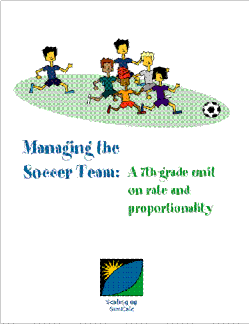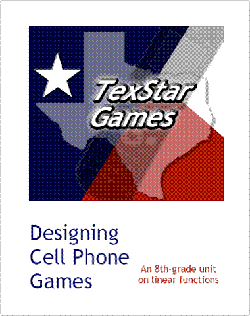An Interactive Software-based Curriculum
For this project, we developed two 3-week units around the topic of rate and proportionality. As students go through the lesson, they are prompted to manipulate the software to discover the connections between motion, graphs, tables and algebraic expressions. To find out more about the software, see SimCalc MathWorlds®.
The two units we developed for Scaling Up SimCalc are aligned with the TEKS (Texas' standards) and the NCTM Curriculum Focal Points for 7th and 8th grade.
- Managing the Soccer Team, focusing on rate & proportionality. (Aligned with 7th grade TEKS.) [download]
- Designing Cell Phone Games, focusing on linear functions. (Aligned with 8th grade TEKS.) [download]
Both units consist of student workbooks, a teacher's guide and corresponding SimCalc MathWorlds® files. Teachers used these materials daily over a 2-3 week period, replacing their regular lessons on the same topics. They were required to have access to computer labs or classroom computer sets, but students were encouraged to share computers in pairs or triads. They could teach the unit by simply following the problems and questions posed in the workbook in the order given, though this was not a "scripted" curriculum. The teacher guide provided lesson plans that teachers could adapt and hints on possible student responses.
Hallmarks of the SimCalc approach to the mathematics of change and variation:
- Anchoring students' efforts to make sense of complex mathematics in their experience of familiar motions, which are portrayed as computer animations.
- Engaging students in activities in which they make and analyze graphs that control animations.
- Introducing piecewise linear functions as models of everyday situations with changing rates.
- Connecting students' mathematical understanding of rate and proportionality across key mathematical representations (algebraic expressions, tables, graphs) and familiar representations (narrative stories and animations of motion).
- Structuring pedagogy around a cycle that asks students to predict, compare their predictions to mathematical reality, and explain any differences.
- Integrating curriculum, software, and teacher professional development as mutually supporting elements of implementation.




